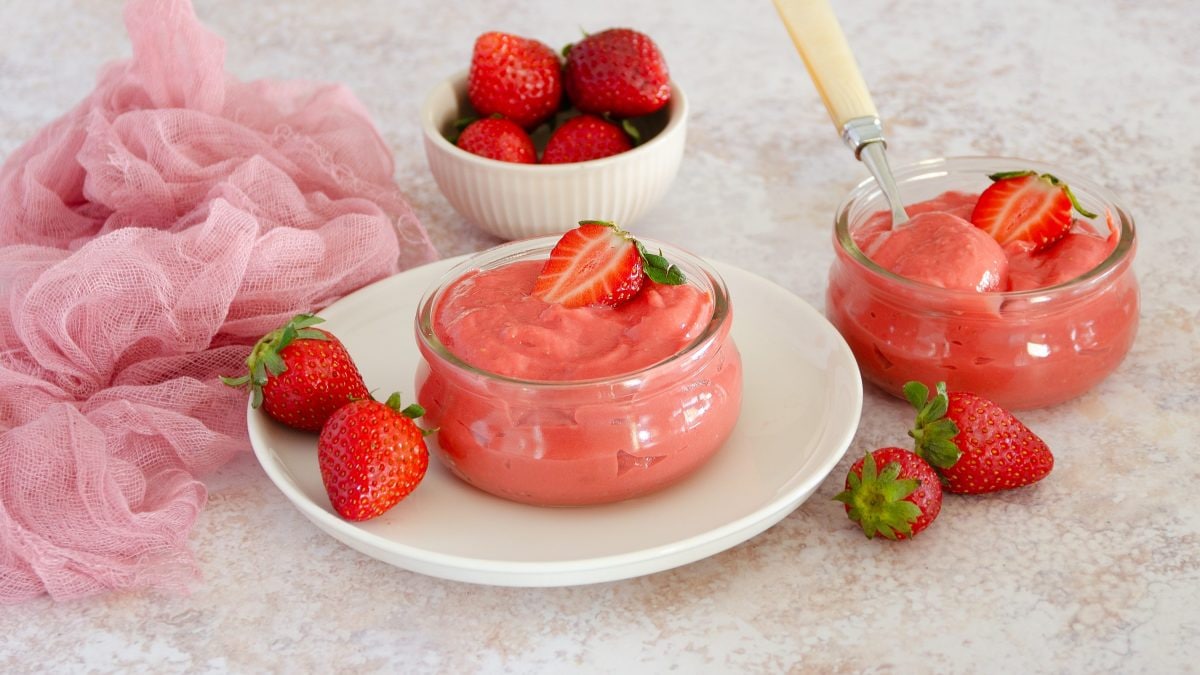
Strawberry Custard is a delicious and fragrant variation of the classic custard. Ideal to prepare in spring, when these juicy red fruits are at the peak of their seasonality, it can be served as a dessert, garnished with a dollop of whipped cream and accompanied by fragrant cat's tongues, or used to fill sponge cakes, cream puffs, and shortcrust pastry baskets. With its refined pink color and irresistible flavor, it will conquer the palates of your guests.
Making it is very simple and requires only a few minutes of preparation: just cut the strawberries into cubes, place them in a saucepan with milk, sugar and grated lemon zest, let them heat and then blend them with an immersion blender until you obtain a smooth and homogeneous sauce. This is mixed with a mixture of egg yolks, sugar and corn starch, then allowed to thicken gently.
The result is an enveloping cream, which must rest, covered with transparent film, until it has completely cooled, so as to firm up to perfection.
What is Strawberry Custard?
Strawberry custard, like many traditional desserts in the United States, has its roots in European culinary practices but became uniquely American with time. The origins of custard itself can be traced back to the 17th century, with early English recipes involving eggs, sugar, and milk. By the 19th century, the custard formula was perfected, and various fruit flavors began to be added for variety. Strawberries, one of the most popular fruits in the U.S., were often incorporated into custards, especially during the peak of strawberry harvest season in the spring. The combination of creamy, smooth custard with the fresh, bright flavor of strawberries quickly gained popularity as a comforting dessert for families and at gatherings. Today, strawberry custard is often featured in pies, parfaits, and puddings, enjoying a nostalgic spot in American kitchens, especially as a summer treat.
Pro Tips for The Best Strawberry Custard
- Always use fresh, in-season strawberries for the best flavor. Look for berries that are vibrant red and fragrant.
- When cooking the custard base (usually made with eggs, milk, and sugar), be sure to cook it over low to medium heat. If you overheat the mixture, it may curdle or become grainy. Stir constantly to prevent any eggs from scrambling, and remove it from the heat once it thickens.
- After cooking, pass the custard through a fine mesh sieve or strainer to remove any unwanted lumps or bits of cooked egg. This will leave you with a smooth, creamy texture.
- Allow the custard to cool down at room temperature before transferring it to the fridge. Chilling it for several hours (or overnight) allows the flavors to meld together and improves the overall texture, making it perfectly set.
Can I Use Frozen Strawberries for This Custard?
Yes, you can use frozen strawberries for making strawberry custard, but there are a few things to keep in mind. First, be sure to thaw the strawberries completely and drain any excess liquid to prevent the custard from becoming too watery. Since frozen strawberries may be softer and release more juice when thawed, the flavor may be slightly less vibrant than fresh strawberries, but they will still work well in the custard. Just make sure to adjust the sugar if the berries are sweeter or more tart than expected.
Why is My Custard so Grainy?
A grainy custard is usually the result of overheating or cooking the mixture too quickly. When the custard is cooked at too high a temperature, the proteins in the eggs can curdle, forming small lumps that make the texture grainy. To avoid this, cook the custard over low to medium heat, stirring constantly, and remove it from the heat once it thickens to prevent the eggs from scrambling. Straining the custard after cooking can also help smooth out any unwanted lumps.
Why Didn't My Custard Set?
If your custard didn’t set, it could be due to undercooking or not reaching the proper temperature. Custard thickens as the egg proteins coagulate, which typically happens around 170-175°F (77-80°C). If it doesn’t reach this temperature, the custard will remain runny. Additionally, be sure to allow it to cool fully in the fridge, as it needs time to firm up. If you used too much liquid or not enough thickening agents (like egg yolks or cornstarch), that could also prevent it from setting properly.
What Can I Use This Custard For?
Strawberry custard is a versatile treat that can be used in various desserts. It makes a great filling for pies, tarts, or pastries like éclairs and cream puffs. You can also layer it in parfaits, trifles, or serve it as a rich sauce over cakes, brownies, waffles, or pancakes. For an extra indulgence, use it as a base for homemade ice cream or sorbet. Its creamy texture and sweet flavor enhance many different desserts.
Can Strawberry Custard Be Made Ahead of Time?
Yes, strawberry custard can be made ahead of time. In fact, making it in advance allows the flavors to meld and the custard to set properly. Simply prepare the custard, let it cool to room temperature, and then refrigerate it for several hours or overnight. This will give it time to thicken and reach the ideal texture. Be sure to cover it with plastic wrap or store it in an airtight container to prevent a skin from forming on top.
Does It Freeze Well?
Strawberry custard doesn’t freeze particularly well due to its creamy texture, which can separate or become watery when thawed. Freezing may cause the custard to become grainy or lose its smooth consistency.
How to Store Strawberry Custard
To store leftover strawberry custard, allow it to cool to room temperature before refrigerating. Transfer it into an airtight container and store it in the fridge for up to 2-3 days. Be sure to cover the surface of the custard with plastic wrap or parchment paper to prevent a skin from forming. When you're ready to enjoy it again, give it a gentle stir to restore its smooth texture.
Ingredients
How to Make Strawberry Custard
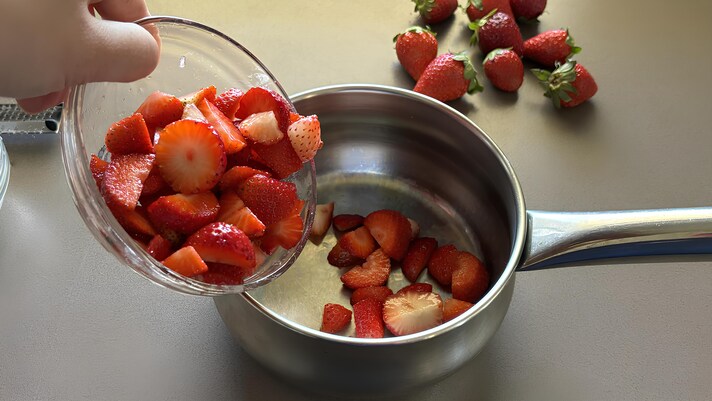
Wash the strawberries, cut them into pieces and transfer them to a saucepan.
Wash the strawberries, cut them into pieces and transfer them to a saucepan.
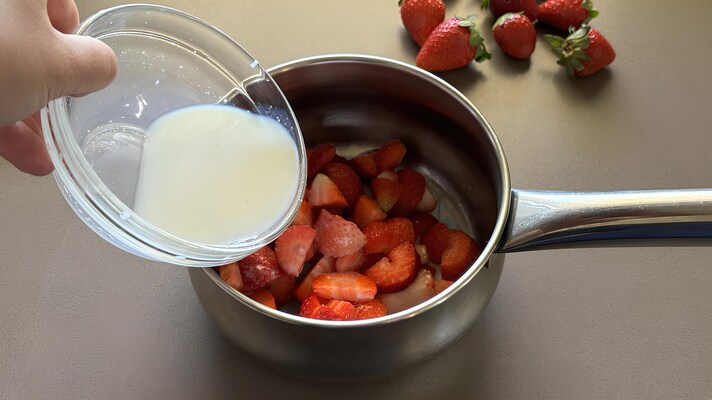
Add the sugar and pour in the milk.
Add the sugar and pour in the milk.
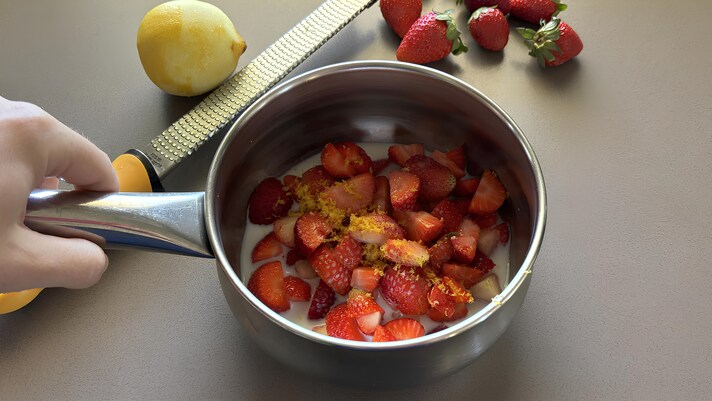
Flavor with grated lemon zest and let it heat over medium heat for a few minutes.
Flavor with grated lemon zest and let it heat over medium heat for a few minutes.
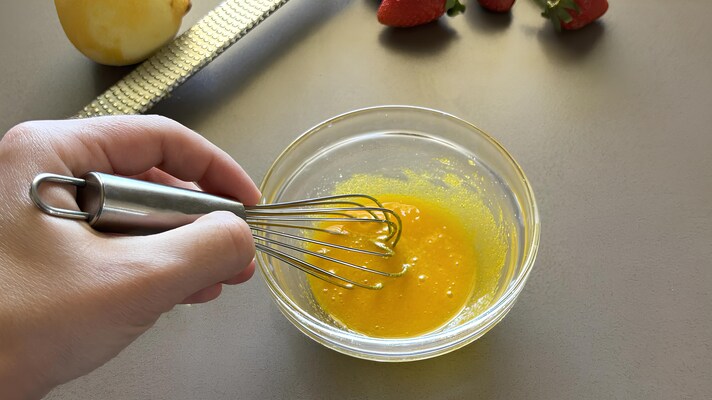
Meanwhile, mix the egg yolks with the sugar in a small bowl, using a hand whisk.
Meanwhile, mix the egg yolks with the sugar in a small bowl, using a hand whisk.
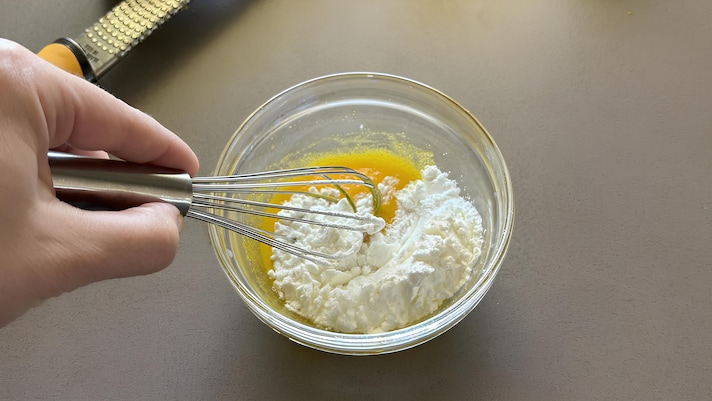
Add the sifted cornstarch and continue mixing until it is well incorporated.
Add the sifted cornstarch and continue mixing until it is well incorporated.
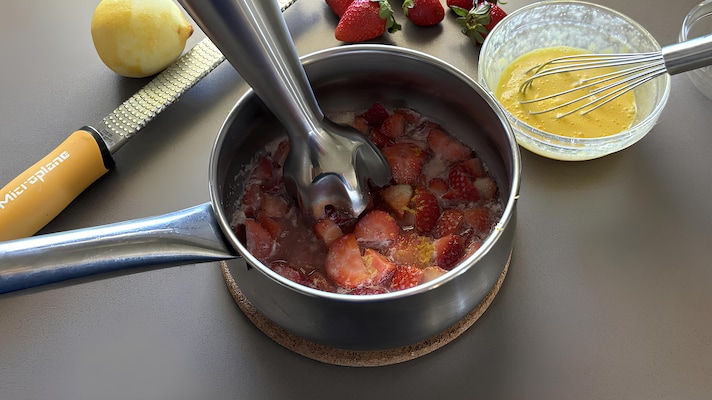
When the milk is very hot and the strawberries are slightly broken up, blend everything with an immersion blender until you obtain a smooth, homogeneous mixture.
When the milk is very hot and the strawberries are slightly broken up, blend everything with an immersion blender until you obtain a smooth, homogeneous mixture.
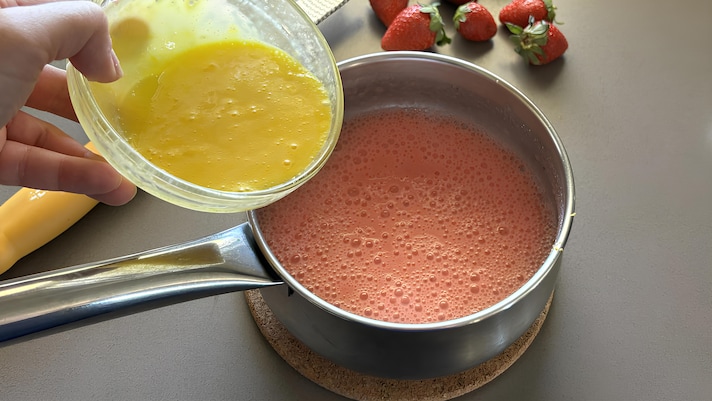
At this point, pour the mixture of egg yolks, sugar and starch into the saucepan with the strawberries.
At this point, pour the mixture of egg yolks, sugar and starch into the saucepan with the strawberries.
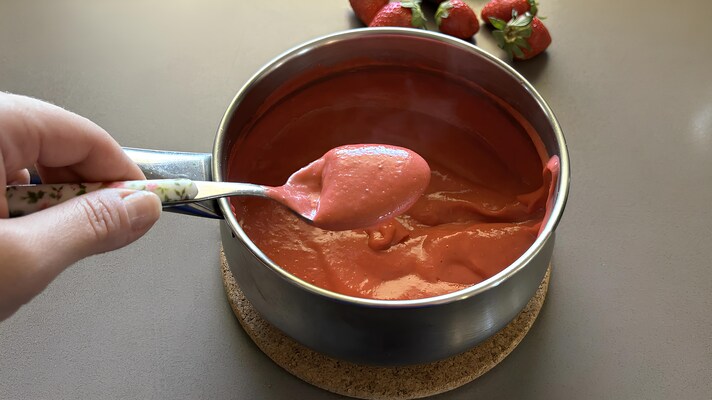
Let it cook on low heat, continuing to mix with a whisk or a wooden spoon. The final result should be a thick, fragrant cream with a uniform color.
Let it cook on low heat, continuing to mix with a whisk or a wooden spoon. The final result should be a thick, fragrant cream with a uniform color.
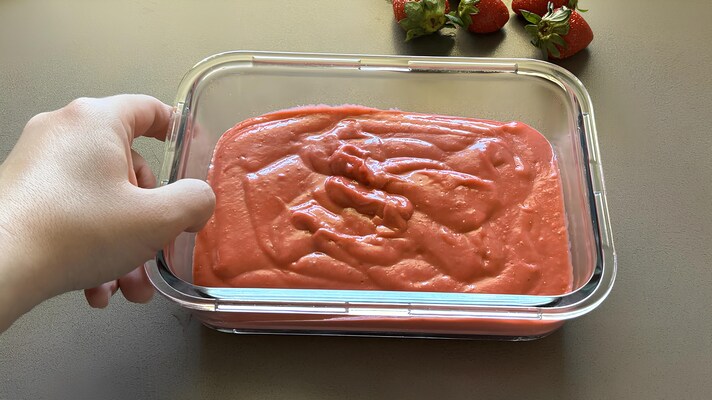
Move the strawberry cream into a wide, low glass container.
Move the strawberry cream into a wide, low glass container.
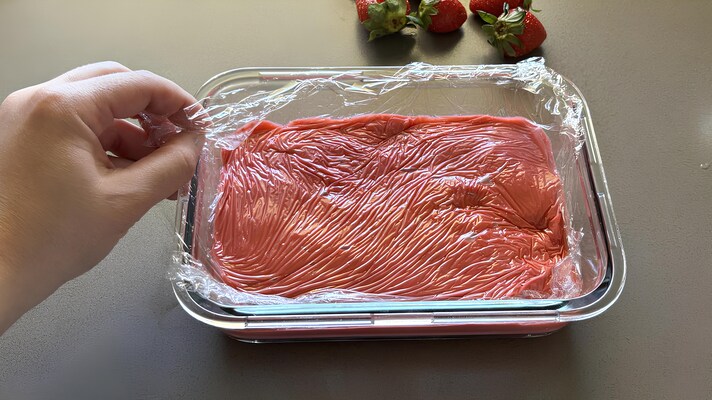
Cover with a sheet of cling film in contact with the cream and let it cool completely.
Cover with a sheet of cling film in contact with the cream and let it cool completely.

Enjoy it as you please!
Enjoy it as you please!
;Resize,width=767;)
